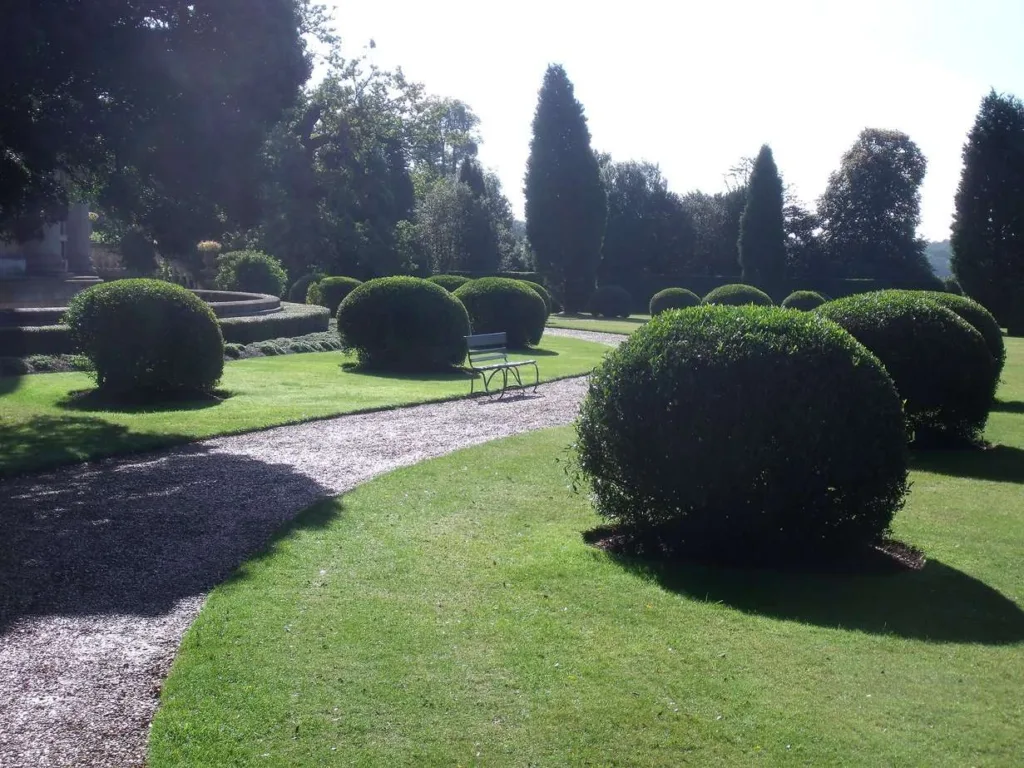Italian garden refers to a style of garden design that takes inspiration from the traditional gardens of Italy, especially during the Italian Renaissance.
The style became popular in Europe and North America during the 19th century, featuring a combination of formal and informal elements, symmetry, and the use of classical architectural features.
Italy, known for its rich cultural heritage and awe-inspiring landscapes, has deeply influenced art, architecture, and garden design across the globe.
One such manifestation of this influence is the Italianate garden, a style that captivates with its elegance, symmetry, and romantic allure.
In this article, we will delve into the essence of Italianate gardens, uncover their historical roots, explore their distinctive features, and illuminate their enduring appeal.

Unveiling the History of Italianate Gardens
A Glimpse into the Past
To understand the essence of Italianate gardens, we must travel back in time to the Renaissance period. It was during this transformative era in Europe, from the 14th to the 17th century, that Italy witnessed a profound rebirth of arts and culture.
As a testament to this flourishing period, Italian noble families sought to create landscapes that mirrored the artistic beauty found within the walls of their palatial residences.
The Birthplace: Italy’s Finest
Italianate gardens originated in Italy, of course, and specifically in the stunning regions of Tuscany and the Veneto.
The lush countryside and rolling hills of Tuscany provided an ideal canvas for the creation of these extraordinary gardens.
At the same time, the water-rich environment of the Veneto region, with its abundance of lakes and channels, presented a unique setting for garden designers to unleash their creativity.
Imported Beauty: The Spread of Italianate Gardens
The allure of Italianate gardens quickly spread beyond the borders of Italy. Inspired by the grandeur of Italian art and culture, noble families and wealthy individuals across Europe began to emulate these gardens, breathing new life into their landscapes.
From France to England and even as far as the United States, Italianate gardens became a sought-after feature, embodying the epitome of refinement and elegance.
Unraveling the Distinctive Features
Symmetry and Balance: The Heart of Italianate Design
One of the defining features of Italianate gardens is their symmetrical layout, which creates a sense of order and harmony.
This symmetrical arrangement often revolves around a central axis, leading the eye to a focal point such as a statue or fountain.
The elements on either side of the axis are meticulously mirrored, accentuating the garden’s balance and grace.
Terraces and Staircases: Ascending to Elevated Beauty
Italianate gardens are known for their skillful integration of terraces and staircases. These architectural elements serve not only as functional means of traversing the different levels of the garden but also as aesthetic features that add depth and drama.
As visitors ascend the terraces or traverse the staircases, they experience a sense of anticipation, unfolding new perspectives of the meticulously designed landscape.
Water: A Vital Element
Water lies at the core of Italianate garden design, symbolizing tranquility and abundance. Fountains, reflecting pools and ornamental water features tastefully adorn these gardens, adding a touch of serenity and whimsy.
Cascades and water channels provide a soothing soundscape, further enhancing the sensory experience and connecting visitors with nature.

Sculptures and Statues: Art Breathing Life
Italianate gardens are truly a marriage of art and nature, where sculptures and statues play a vital role. These exquisite works of art, often depicting gods, goddesses, or mythological creatures, punctuate the garden’s landscape, evoking a sense of story and wonder.
As visitors stroll through a garden adorned with these masterpieces, they become part of a living tableau, where art and nature seamlessly intertwine.
Plant Palette: The Green Tapestry
The plants and foliage in Italianate gardens form an integral part of their design. Meticulously chosen and arranged, these plantings contribute to the overall composition, lending texture, color, and fragrance.
Cypress trees, boxwoods, roses, and citrus trees are common choices, reflecting the Mediterranean climate and creating a lush green tapestry that epitomizes Italian charm.
The Enchanting Allure Lives On
The timeless appeal of Italianate gardens continues to captivate garden enthusiasts and visitors alike, transcending centuries and borders. The beauty they exude and the atmosphere they evoke serve as an enchanting escape, transporting us to the romantic landscapes of Italy.
Whether it’s exploring a meticulously designed Italianate garden in the heart of England, strolling through the terraces of an Italian villa, or marveling at the iconic Villa d’Este in Tivoli, the charm and allure of Italianate gardens remain undiminished.
Discovering Italianate Gardens Near You
If you find yourself desiring to immerse yourself in the magic of Italianate gardens, there may be enchanting destinations closer than you think.
Many public parks, botanic gardens, and grand estates have embraced this garden design style, bringing a piece of Italy’s legacy to visitors around the world.
Here are just a few notable Italianate gardens worth exploring:
- Villa d’Este, Tivoli, Italy
- Boboli Gardens, Florence, Italy
- Powerscourt Gardens, County Wicklow, Ireland
- Isola Bella, Lake Maggiore, Italy
- Villa Carlotta, Lake Como, Italy
- The Dunedin Chinese Garden, Dunedin, New Zealand
Cultivating Your Own Italianate Oasis
While visiting the grand Italianate gardens is a treat for the senses, incorporating elements of this design style into your garden can transport you to a romantic Italian oasis right at home.
Whether you have a sprawling estate or a compact urban garden, a touch of Italianate elegance can breathe new life into your outdoor space.
Consider the following elements to infuse your garden with Italianate charm:
- Symmetry and balance: Create a central axis and mirror elements on either side to achieve a sense of harmony.
- Terraces and staircases: Incorporate raised levels and steps to introduce depth and drama.
- Water features: Add fountains, reflecting pools, or cascades to infuse serenity and ambiance.
- Sculptures and statues: Introduce artful sculptures or statues to bring life and meaning to your garden.
- Plant selection: Choose plants that thrive in your climate and reflect the Mediterranean aesthetic, such as cypress trees, boxwoods, and roses.
By incorporating these elements with your style, you can craft an Italianate haven that beckons you to relax, unwind, and savor the beauty of your slice of Italy.

In Conclusion
Italianate gardens continue to inspire and captivate with their timeless beauty. Rooted in the allure of Italy, these gardens harmoniously blend art, nature, and architecture to create enchanting landscapes that transport us to a world of elegance and romance.
Whether exploring the grand gardens of Europe, discovering hidden gems in your local region, or creating your own Italianate oasis, may the beauty of these gardens ignite your imagination and infuse your life with a touch of Italian enchantment.
